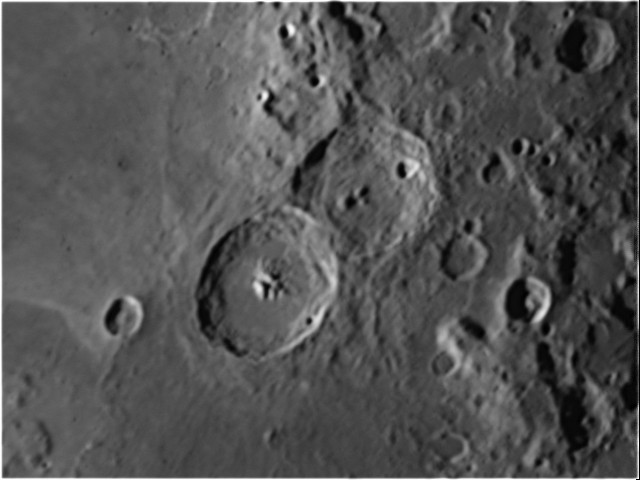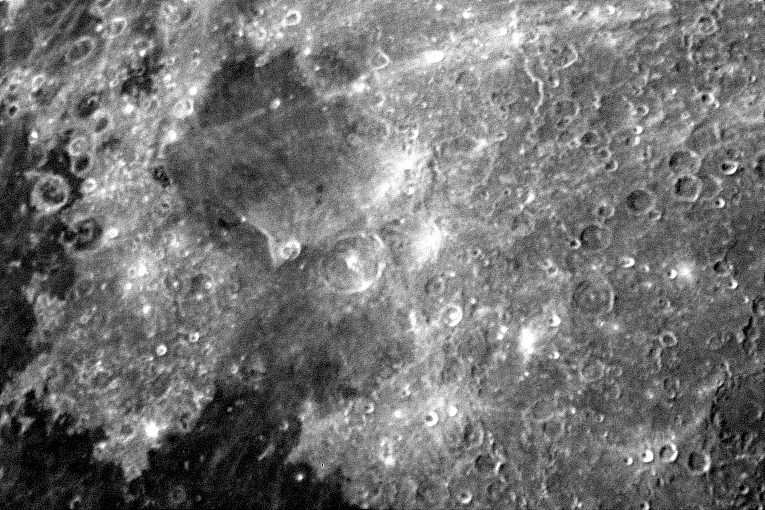
0.002 seconds exposure, SBIG ST-8E CCD.
16" f/10 RC at prime focus.

Just to the west of Mare Vaporum is a chain of 3 large walled plains. The best preserved of these is the northernmost, the 100km diameter Theophilus. At high Sun angles, Theophilus appears simply as a bright ring, with a bright centre which is the central peak, as seen in the above image. However when the Sun is at low altitudes over the crater, the terraced walls and central peak stand out well, as seen below. In the image below, Theophilus is the bottom of the three large craters.
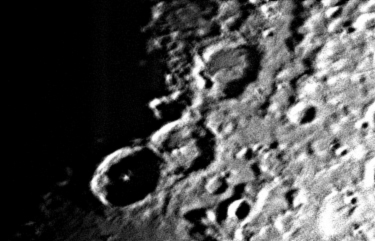
As can be seen in the above image, the southern rim of Theophilus overlaps the next walled plain, Cyrillus, which has a double central peak.
The third of the walled plains is Catharina. This crater has been heavily degraded by subsiquent impacts, particularly on its northern rim.
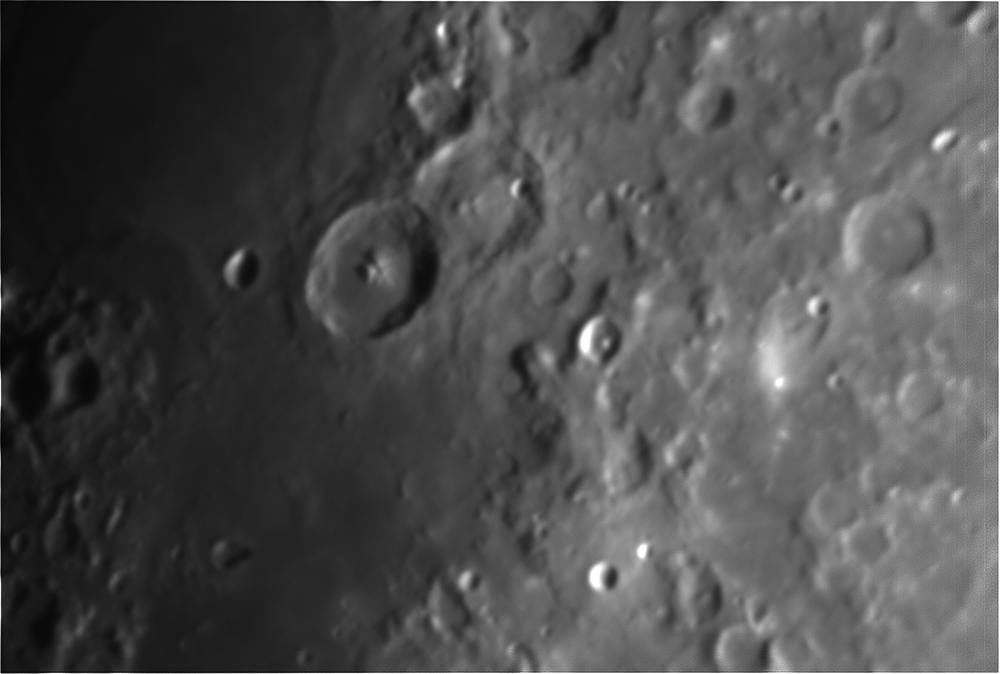
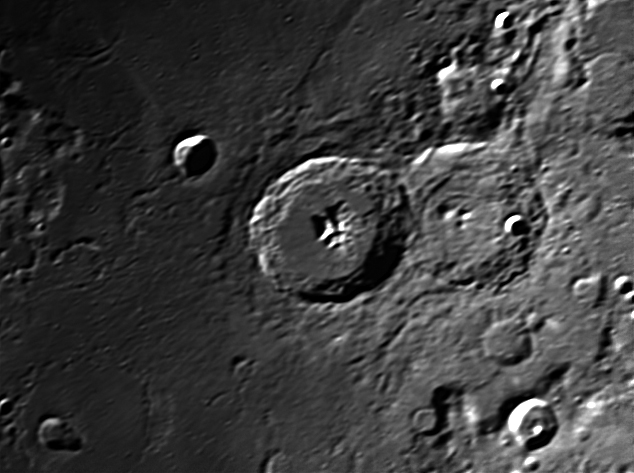
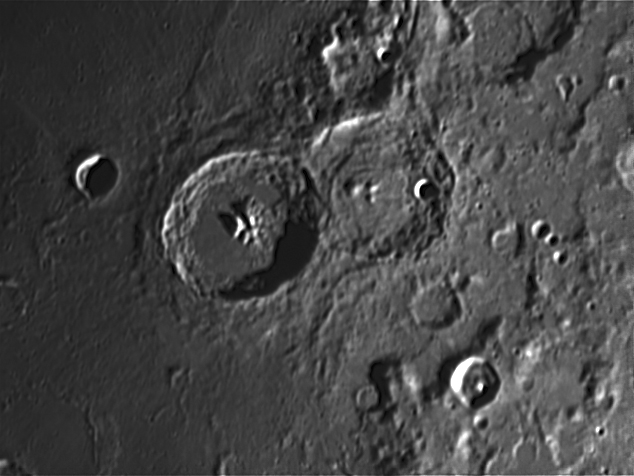
It is interesting to compare the above images. The first one is much inferior to the other 2, yet the conditions were quite similar. The difference lies with the detectors. The ST10, takes images much slower than the DMK video CCD. As a result it is possible to obtain far more images with the DMK and as a result, there is a greater chance of getting some high quality images for processing.
